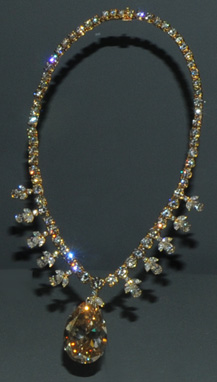Diamond
Diamond is a crystalline form of carbon which has a density of has a density of 3.51 gm/cm3 compared to 2.26 gm/cm3 in the graphite form. Imperfectly formed crystalline forms of diamond are called bort and black diamond. They are slightly less dense than diamond and are somewhat tougher and harder. They are used for diamond drills and abrasives.
While diamond is the hardest substance, rating a 10 on the hardness scale, several carbon compounds called carbides rival its hardness. Boron carbide, B4C, is the hardest next to diamond but several of the metal carbides are extremely hard and find application as cutting edges on high speed tools.
The extraordinary "fire" of a diamond gem is partly attributable to it's high index of refraction, which at n=2.417 is higher than any common mineral except zircon.
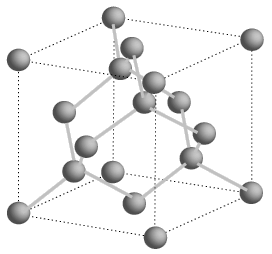
|
This crystalline form is called the "diamond lattice", and it occurs in other substances (e.g., silicon). It is a structure which Ashcroft and Mermin call "two interpenetrating face-centered cubic" primitive lattices. The lines between carbon atoms in the lattice illustration indicate nearest-neighbor bonds. |
This is the Hazen Diamond Necklace. The 325 diamonds in this platinum necklace weigh a total of 131.4 carats. It was designed by Harry Winston, Inc. and a gift to the Smithsonian in 1979 by Lita Annenberg Hazen. All these diamonds are on display in the Smithsonian Museum of Natural History. The major sources of diamonds are the Republic of South Africa and Tanzania. Most diamonds are found in a type of volcanic rock called kimberlite, and in particular in structures called "kimberlite pipes". |
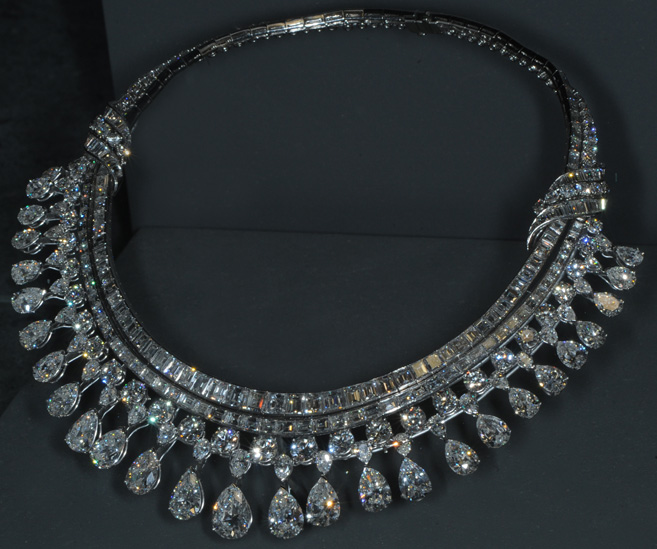 |
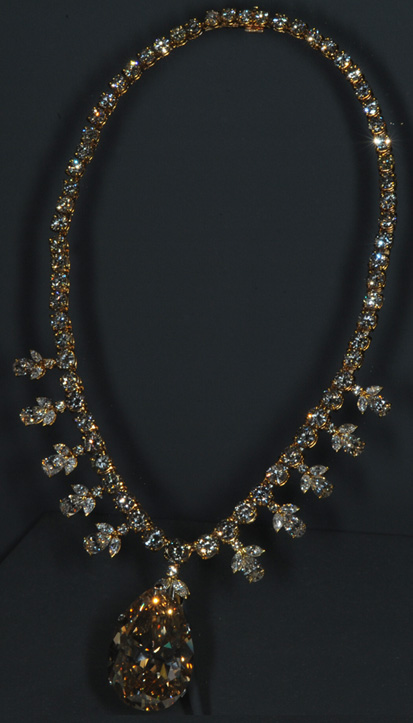 |
Necklace with the Victoria-Transvaal Diamond at 67.89 carats. "The Victoria-Transvaal is a 67.89-carat, brownish-yellow pear shaped stone. It was cut from a 240-carat crystal that was found in the Transvaal, South Africa. The first cutting produced a 75-carat 116-facet stone that measured 1 x 1?/8 inches; a recutting retained the same length and width, but reduced the depth to better proportions, making it more brilliant. The diamond has been featured in several Hollywood films, including a Tarzan episode from 1952 titled Tarzan's Savage Fury, and in leading exhibitions in the United States and Canada. The necklace was designed by Baumgold Brothers, Inc, and consists of a yellow gold chain with 66 round brilliant-cut diamonds, fringed with ten drop motifs, each set with two marquise-cut diamonds, a pear-shaped diamond, and a small round brilliant-cut diamond (the total weight of the 106 diamonds is about 45 carats). "
|
Thompson DiamondsThe brooch is 36.73 carats and the earclips are 39.58 carats. The three cognac-colored, pear-shaped diamonds wer cut in 1956 from a single 264-carat crystal. Nearly 20 carats of pear-shaped white diamonds accentuate the matching set. |
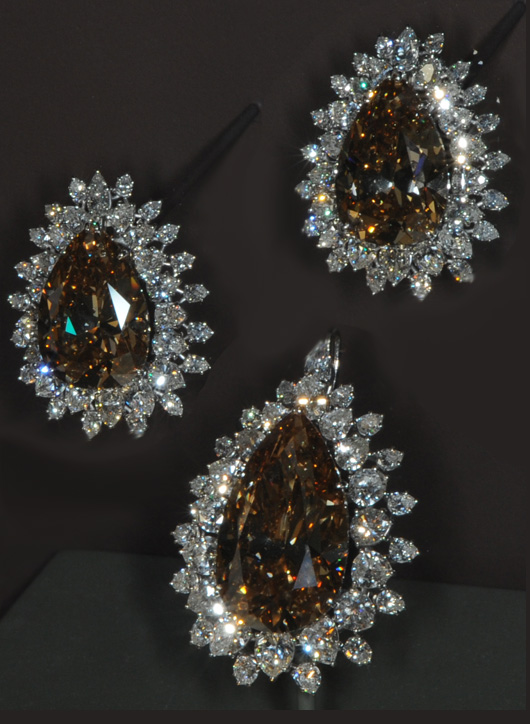 |
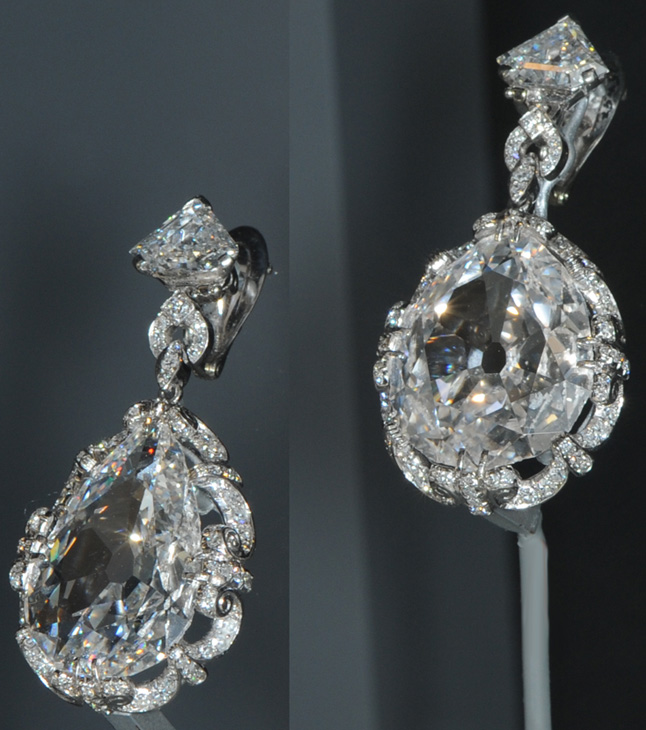 |
The Marie Antoinette diamondsThe large diamonds in these modern earrings were once set in a much older pair. According to sworn documents, the original earrings were owned by Marie Antoinette, the queen of France who was guillootined in 1793 during the French Revolution. The earrings were said to be a gift from her husband, King Louis XVI. According to one legend, she had them with her when she was arrested fleeing the French Revolution in 1791. Grand Duchess Tatiana Yousupoff of Russia later acquired the earrings. They stayed within her family until 1928. |
The diamond immediately right is the Oppenheimer Diamond from Dutoitspan mine, Kimberley, South Africa. It is remarkable not only for its size, 253.7 carats, but also because it has survived uncut. Its double pyramid or octahedral shap is typical of many diamond crystals. |
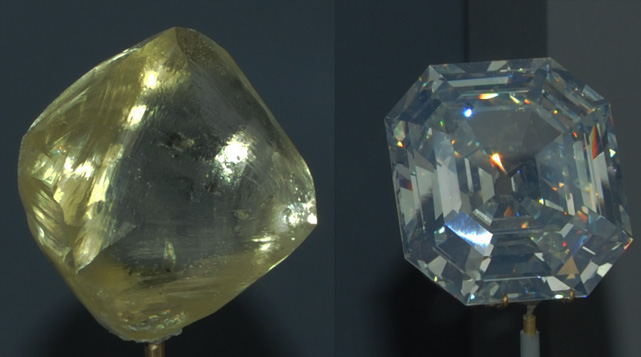 |
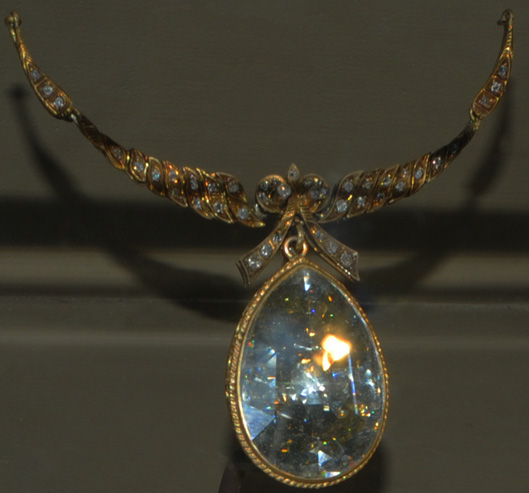 |
This is called the "Mystery Diamond Necklace". The mystery is not only that the origin of the necklace is unknown, but the fact that the 10-15 carat diamond looks much larger. The cleverly designed setting creates the illusion that this wafer-thin diamond is five or six times heavier than it is. It was a gift to the Smithsonian by Lillian Turner in 1998. |
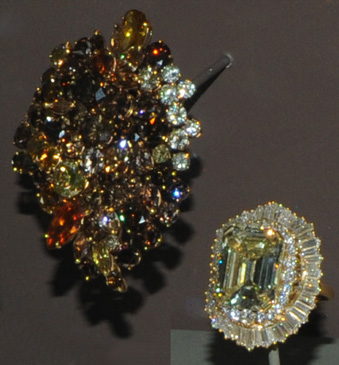 |
This 61.3 carat diamond brooch and the 22 carat ringdent are of unknown origin. The brooch is of 18-carat gold and contains 71 diamonds ranging in weight from 0.3 to 2.5 carats. The colors are natural. The yellow emerald-cut diamond is set in a ringdent designed to be worn as a pendant or ring. 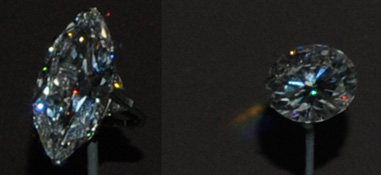 |
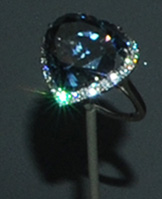 | Blue DiamondThe Blue Heart Diamond Ring has an extraordinary 30.62 carat blue diamond from South Africa. It is two thirds the size of the Hope Diamond. Pink DiamondThis is a 2.9 carat pink diamond, among the rarest of diamond colors. The cause of the pink color is not known. | 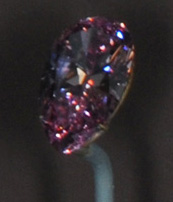 |
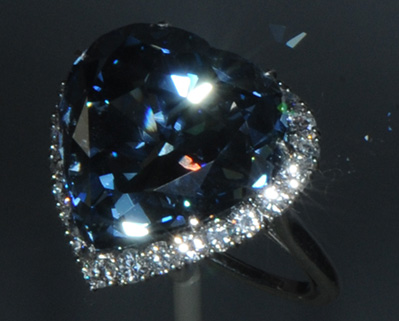 | 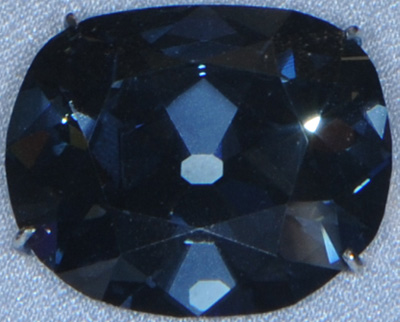 |
This is a larger view of the Blue Heart Diamond Ring compared to the famous Hope Diamond. It was interesting to note that the Hope Diamond is displayed unmounted in this 2010 image compared to 2003 when it was displayed in a necklace. The history of the Hope diamond may be found on the Smithsonian website. The Hope Diamond is 45.52 carats and perhaps the most famous diamond in the world. |  |
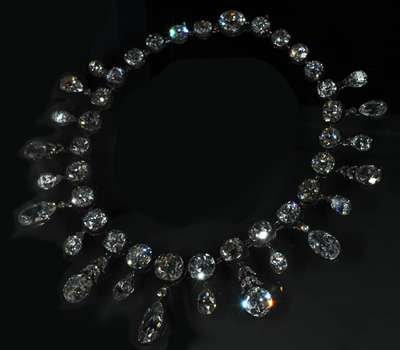 | 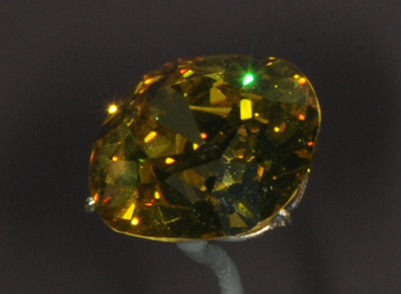 |
Mindat: Diamond
| Minerals |
| Measuring in carats |
References
Kittel
Ashcroft & Mermin
| HyperPhysics*****Geophysics | R Nave |
